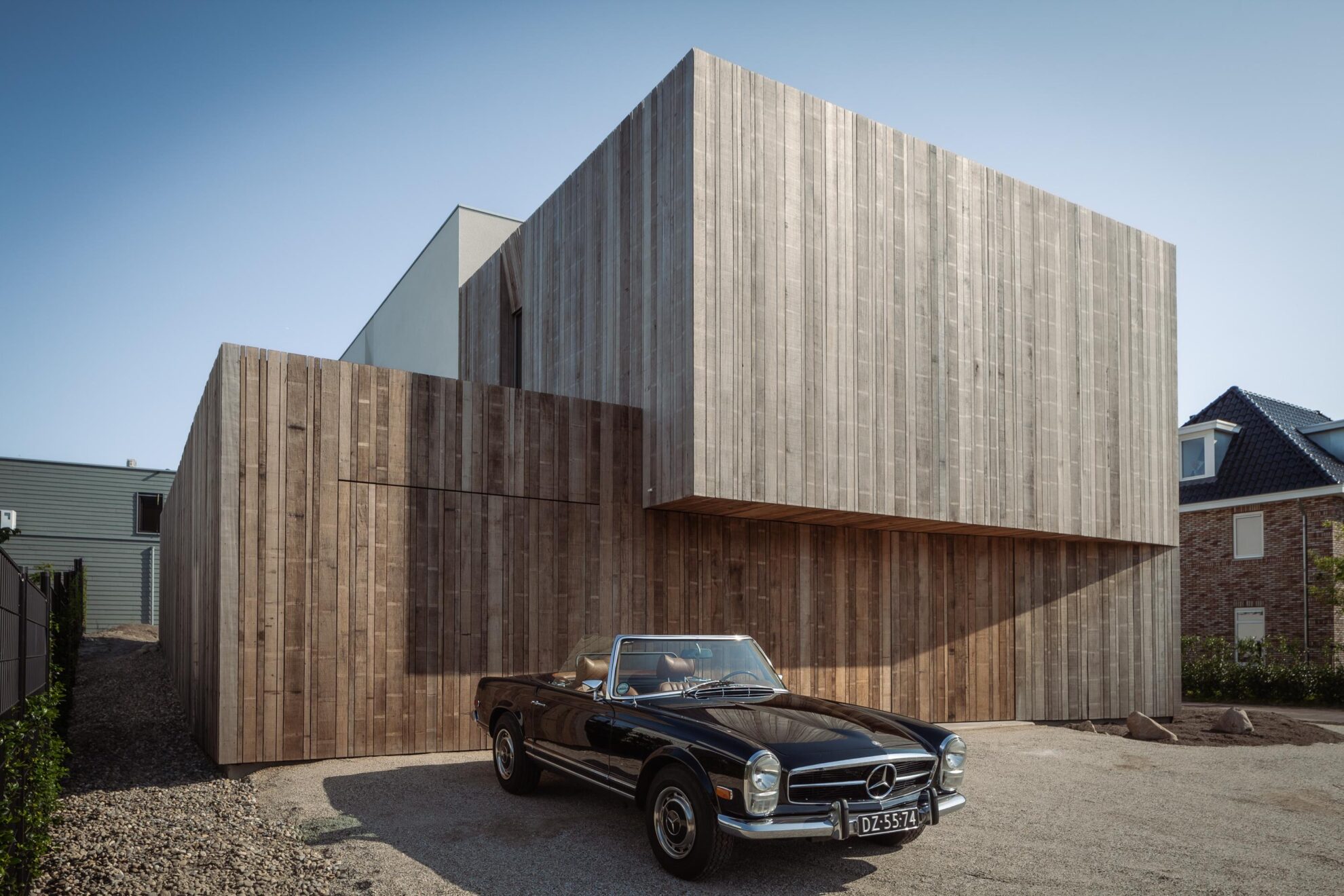Greying. A natural transformation of wood that is exposed to the elements without any treatment. Greyed wood is increasingly a visual element seen in architecture. A logical consequence of the wider use of this sustainable building material. One architect embraces it. Another prefers to avoid it for a specific project. But is that even possible? And what exactly happens to wood? What do sun and rain do? We explain it.
The effect of UV radiation and rain
The greatest influencing factor on natural greying is ultraviolet radiation. In other words, the sun. Wood mainly consists of cellulose, hemicellulose, and lignin. Lignin can be seen as a kind of glue. It also gives wood its color. When UV rays penetrate the surface of the wood, this component breaks down, and the wood loses its original color. The cellulose and hemicellulose remain visible and are whiter in color. This is how wood eventually takes on a silver-grey hue. Rain, or even high humidity, contributes to the process triggered by UV radiation. It accelerates the greying process and washes away the degraded lignin components.

(Photo: natural greying on rough Platowood Fraké. Villa K340 – Francois Verhoeven)
The course of greying
All types of wood eventually turn grey. Only a UV-blocking treatment and regular maintenance can help prevent this as much as possible. How long the greying process takes depends on the amount of sunlight the wood is exposed to, the climate and location, and the type of wood. And that’s why it’s unique for every project. On an open beach location, we know our wood can become fully grey within a few months, whereas in more enclosed areas, it may take several years before the wood weathers. What is consistent is that greying does not affect the quality of Platowood. Its strength and durability are preserved.
Color change due to wet weather
Greying is a process that begins at the surface and over time penetrates deeper into the wood. When wood starts to grey, rain or water can temporarily bring back its darker color. Once the wood has fully greyed, these color differences caused by moisture become less noticeable. If you like this, it can create a lively effect on a façade.
Pre-greying for even transition
For example, under a canopy or overhang, there is little or no sunlight. And UV rays are precisely what cause the breakdown of lignin in wood that leads to greying. This causes color differences with the wood parts exposed to a lot of sunlight. A pre-greying agent can be applied to make the natural greying process appear more uniform. Because what does the pre-greying agent do? This treatment gives the wood a greyed appearance. The pre-greying agent slowly degrades while the underlying wood naturally turns grey. This way, you visually bridge the transition from the original color of the wood to the silver-grey tint.

(Photo: application of a pre-greying agent on project De Gebroeders in Eindhoven)
Natural greying: a matter of taste
Thanks to our hydro-thermal process, Platowood can be used outdoors for a long time without treatment. Whether or not to let the wood turn grey, or to treat it with our pre-greying finish Weathered, is a personal choice. We often hear from architects that they let the wood grey to further emphasize its natural appearance and character. The greyed wood has a timeless, minimalist beauty and requires the least maintenance or attention. We are happy to help make a good choice that fits the project and the client’s wishes.
Would you like to see a project that showcases the greying process? Then view the project page of our Platowood Pavilion, finished with Platowood Fraké.
